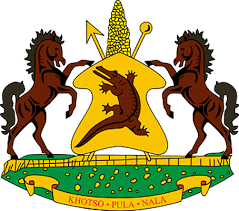Ntsoaki Motaung
The Food and Agriculture Organisation of the United Nations (FAO) and the World Food Programme (WFP) have added Lesotho and several other African countries to their hunger hotspot list.
For the outlook period from November 2024 to May 2025, FAO and WFP have issued an early warning for urgent humanitarian action in 16 hunger hotspots, encompassing a total of 22 countries and territories, including two regional clusters across eight countries.
In these hotspots, significant portions of the population are expected to experience a serious deterioration in already high levels of acute food insecurity, jeopardising lives and livelihoods.
Identified through forward-looking analysis, these hotspots face the potential for a marked rise in acute food insecurity during the outlook period, driven by multiple overlapping and interlinked factors, including conflict and organized violence, economic shocks, weather extremes, and climate variability.
The report titled Hunger Hotspots: FAO–WFP Early Warnings on Acute Food Insecurity: November 2024 to May 2025 Outlook, published yesterday, highlights the most significant expected deteriorations in acute hunger during the outlook period.
However, it does not represent all situations with high levels of acute food insecurity.
Targeted humanitarian action is urgently needed to save lives and livelihoods across all 16 hunger hotspots.
“Chad, Lebanon, Myanmar, Mozambique, Nigeria, the Syrian Arab Republic and Yemen are classified as hotspots of very high concern, where large numbers of people are facing or are projected to face critical levels of acute food insecurity,” reads the report.
It stated that the situation was driven by escalating factors that threaten to deepen already life-threatening conditions.
“Since the May 2024 edition, Kenya, Lesotho, Namibia and the Niger have been added to the hunger hotspots list, while Burkina Faso, Ethiopia, Malawi, Somalia, Zambia and Zimbabwe remain designated as hunger hotspots,” it adds.
The report is part of the United States and European Union (EU) funded suite of analytical products produced under the Global Network Against Food Crises, to enhance and coordinate the generation and sharing of evidence-based information and analysis for preventing and addressing food crises.
This series also includes the recently published 2024 Global Report on Food Crises, which retroactively looks at the levels of acute food insecurity in 2023, in complement to the Hunger Hotspots which is a forward-looking early warning analysis that provides decision-makers with information for planning and resource allocation.
The report indicates that following widespread and intense drought earlier in 2024, countries in Southern Africa, including Lesotho, Malawi, Zambia, and Zimbabwe, face flood risks due to forecasts of above-average rainfall, while Namibia is expected to continue experiencing drier-than-normal conditions.
“The widespread and intense drought, induced by El Niño and compounded by macroeconomic challenges, is driving a sharp rise in acute food insecurity across Lesotho, Malawi, Mozambique, Namibia, Zambia, and Zimbabwe during the outlook period,” it reads.
Additionally, the report highlights that the prospects of above-average rainfall and increased cyclone activity linked to the La Niña phenomenon pose serious aggravating risks.
“Significant rainfall deficits, coupled with heat waves, have drastically reduced maize production—the main food staple—in Southern Africa in 2024. Zambia, Zimbabwe, and Lesotho have experienced production declines of 50–60 percent compared to the five-year average.”
In Lesotho, the report projects that the number of people in Crisis or worse (IPC Phase 3 or above) will rise to 403,000 from October 2024 to March 2025.
In Zambia, 5.8 million people (33 percent of the analyzed population) are projected to face Crisis or worse levels of acute food insecurity (IPC Phase 3 or above) during the same period, including nearly 236,000 people in Emergency (IPC Phase 4).
“Worldwide, conflicts are escalating, economic instability is rising, and climate disasters are becoming the new norm. With more effective political and financial support, humanitarians can and will continue to implement proven and scalable solutions to address hunger and reduce needs over the long term,” said Cindy McCain, WFP Executive Director, in Joint FAO-WFP News Release yesterday.
“It’s time for world leaders to step up and work with us to reach the millions of people at risk of starvation – delivering diplomatic solutions to conflicts, using their influence to enable humanitarians to work safely, and mobilizing the resources and partnerships needed to halt global hunger in its tracks,” McCain added.
Summary
- The report is part of the United States and European Union (EU) funded suite of analytical products produced under the Global Network Against Food Crises, to enhance and coordinate the generation and sharing of evidence-based information and analysis for preventing and addressing food crises.
- This series also includes the recently published 2024 Global Report on Food Crises, which retroactively looks at the levels of acute food insecurity in 2023, in complement to the Hunger Hotspots which is a forward-looking early warning analysis that provides decision-makers with information for planning and resource allocation.
- “The widespread and intense drought, induced by El Niño and compounded by macroeconomic challenges, is driving a sharp rise in acute food insecurity across Lesotho, Malawi, Mozambique, Namibia, Zambia, and Zimbabwe during the outlook period,” it reads.

Your Trusted Source for News and Insights in Lesotho!
At Newsday Media, we are passionate about delivering accurate, timely, and engaging news and multimedia content to our diverse audience. Founded with the vision of revolutionizing the media landscape in Lesotho, we have grown into a leading hybrid media company that blends traditional journalism with innovative digital platforms.





